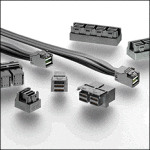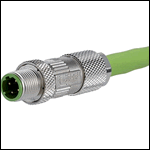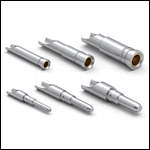Next-Generation Networking: Commercial 400G on the Horizon
The need for increased bandwidth in telecommunications networks has given rise to many new innovations. What does the future hold for the WAN?
With traditional telecom service providers’ revenue finally growing again, so are their capital expenditures – both at about 5% annual growth rates. However, bandwidth demands are growing at anywhere from 30% to 70% depending on the region and which part of the network you examine. Current core traffic is increasing at a cumulative annual growth rate (CAGR) of about 45%, resulting in a core capacity requirement of 3.5Tb/s in 2016 and 12Tb/s by 2020. Drivers of this content include all the usual suspects – over-the-top (OTT) suppliers like Amazon, Google, Netflix, video-on-demand (VoD), cloud-based applications, HD video, media-rich web pages, and on-line gaming. Investments in the core infrastructure at a 5% annual growth rate may not be enough to keep up with the demand, but unfortunately, it may be all we get if telcos cannot determine how to garner more revenue from these bandwidth-hungry applications.
The diagram below shows British Telecom’s (BT) view of the evolution of the core network. Starting in 2012, it was deploying 100G coherent technologies and is now in the process of installing both 200G and 400G as needed. This is representative of worldwide trends.
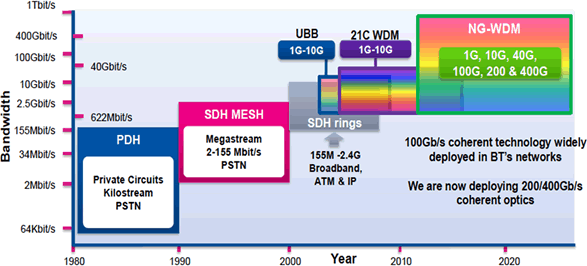
Figure 1: Evolution of the WAN (Source: Next Generation Optical Networking Conference, Europe 2015, British Telecom)
Network evolution may help deliver higher bandwidth faster. One industry expert describes 100G in the WAN as “in its teenage years,” while 10G is starting to decline in 2015. In 2014, 100G accounted for more capacity shipped into the core network than 10G did according to Infonetics/IHS. What is interesting to note from Infonetics’ research is that it found just five companies delivered 85% of this capacity, and they are all vertically integrated – they design their own digital signal processing (DSP) chips and optics. Also, China accounted for 35% of the bandwidth add, with Huawei installing most of it.
Beyond 100G coherent, 200G and 400G for telecom networks are taking on new forms, as seen in the diagram below.
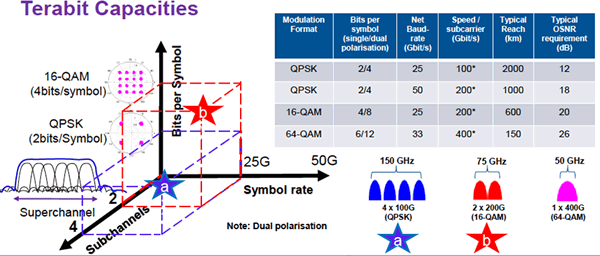
Figure 2: Next-generation WAN technologies (Source: NGON Europe 2015, British Telecom)
Because even in fiber there is signal degradation and impairments like modal and chromatic dispersion, advanced modulation schemes must be used. For 100G, that is high-order amplitude/phase modulation like QPSK or 8-QAM along with coherent detection using a local oscillator laser and DSP in the receiver. To get beyond 100G, there are choices to be made depending on the requirements of the network, what most of the industry calls three degrees of freedom – bit rate per symbol, symbol rate, and sub-channels as shown in the diagram above. The tradeoffs are age-old and simple – cost and complexity versus optical reach.
While it is feasible to squeeze 400G into a 50GHz DWDM grid by using 64-QAM, the reach would only be 150km. This may be good enough for access and metro networks, but certainly not for long-haul. But if you could somehow choose the modulation scheme, grid arrangement, and data rate, you could optimize both optical reach and cost. This is what most developers are currently working towards – the emergence of what some call “soft optics,” a form of software-defined networking (SDN), so to speak.
As mentioned above, Huawei is clearly the leader in 100G deployments. This chart shows its vision of the evolution of telecom networks beyond 100G.
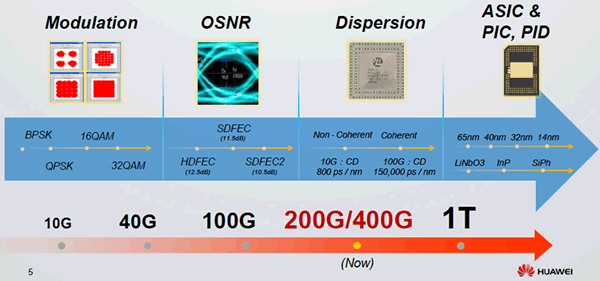
Figure 3: Huawei’s NG WAN vision (Source: NGON 2015 Europe, Huawei)
Clearly, 200G and 400G are being tested and deployed in trials today, and the telecom technical community has its eye on what the next technology will be to move data rates into 1Tb/s and beyond. Huawei is one of the leaders in the development of these technologies, which include not only the different modulation formats mentioned above, but DSP in the form of variations of forward error correction (FEC), as seen in the optical signal-to-noise ratio (OSNR) eye diagram shown here; chromatic dispersion compensation and new application-specific integrated circuits (ASICs); and photonic integrated circuits (PICs). Not only is Huawei maximizing its use of traditional III-V materials like GaAs and InP, but with its acquisition of Caliopa in 2013, it is now on the forefront of silicon photonics (SiPh) research, all the while making sure smaller and smaller substrates are possible – moving from 65nm through 40nm, 32nm, and eventually to 14nm technology.
Four other equipment manufacturers are on similar paths – Alcatel-Lucent, Ciena, Cisco, and Infinera – all of which are developing their own technologies without the help of optical components vendors. This is really nothing new; these same OEMs developed their own 10G line cards with on-board optics before moving to pluggable optics in next generations. What is different about it, however, is that in at least the case of three of them, they own their own optical technology. Infinera with its PICs, Cisco with its SiPh, and Huawei with its SiPh line. How this affects components vendors in the long term is still unclear, but it will certainly have an impact.
How does all this influence the connector industry? All connectors being used in this equipment will need to continue to evolve to handle higher data rates and signal integrity while also lowering their susceptibility to EMI – no small task when you get beyond 100G.

